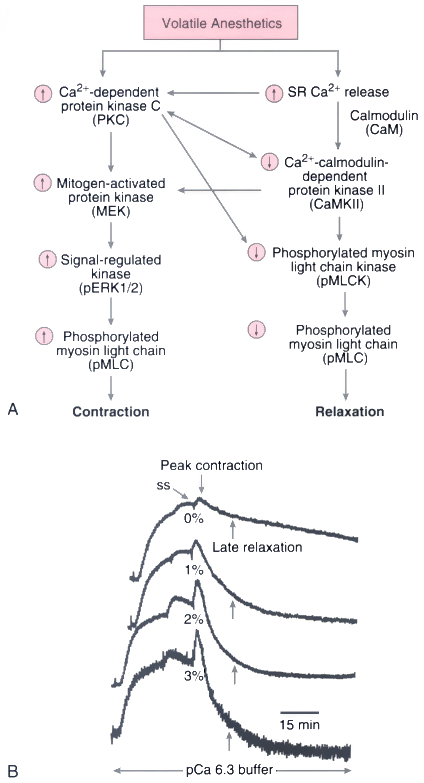 |
 |
Figure 6-9
A, Proposed signaling
pathways underlying volatile anesthetic (halothane and isoflurane)-induced contraction
and relaxation in pulmonary artery smooth muscle. After Ca2+
release
from intracellular stores, there are dose-dependent increases in force initially
(associated with protein kinase C activation), which is followed by a decrease in
force (associated with a Ca2+
-calmodulin-dependent protein kinase II activation).
High concentrations of halothane may activate a protein kinase C-Ca2+
-calmodulin-dependent
protein kinase II pathway. B, Example of biphasic
(contraction-relaxation) effect of halothane on pulmonary arterial smooth muscle.
Halothane dose-dependently enhanced Ca2+
-activated peak force as well
as late relaxation. 0%, 1%, 2%, and 3%, halothane concentrations; ss, control force
at steady state before halothane. (Adapted from Su JY, Vo AC: Ca2+
-calmodulin-dependent
protein kinase II plays a major role in halothane-induced dose-dependent relaxation
in the skinned pulmonary artery. Anesthesiology 97:207, 2002 and from Zhong L, Su
JY: Isoflurane activates PKC and Ca2+
-calmodulin-dependent protein kinase
II via MAP kinase signaling in cultured vascular smooth muscle cells. Anesthesiology
96:148, 2002.)

 |
